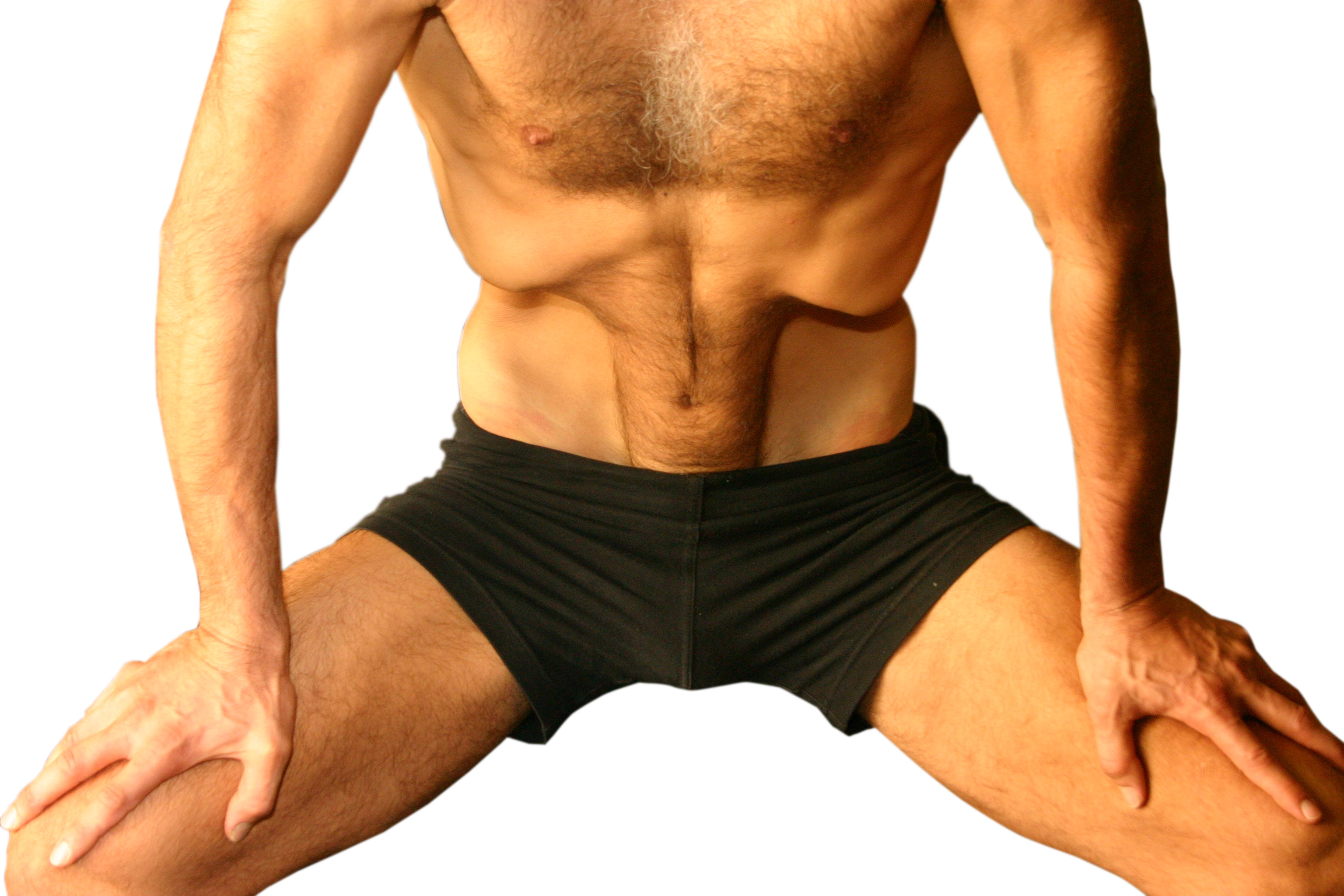In the traditional Hatha Yoga system given in the Hatha Yoga Pradipika (HYP), there are six cleansing routines (Shat-karma – षट्कर्म) described:
“Dhauti, basti, neti, trataka, nauli and kapalabhati; these are known as shatkarma or the six cleansing processes.” (HYP verse 2.22)
- Dhauti: digestive tract and intestinal cleansing with a long, wet cloth. In ‘Gherand Samhita’ several other dhauti techniques are also given. One of the more popular alternate practices is called the Shankha Prakshalana.
- Basti: yogic enema for internal cleansing. Helps cure digestive problems, removes constipation and strengthens the solar plexus.
- Neti: nasal cleansing through ‘sutra neti’ (cleansing with thread) and ‘jala neti’ (cleansing with warm, saline water using a neti pot). Highly recommended for allergies, common cold and cough as well as providing resistance to various diseases of ear, nose and throat.
- Trataka (concentrated gazing): usually done with concentrated gazing on the tip of the flame of a candle. It helps remove diseases of the eye as well as develops one-pointedness which helps in meditation.
- Nauli (abdominal massaging): nauli is performed by the practice of contracting and isolating the rectus abdominii muscles. Nauli helps in igniting the digestive fire, removing indigestion and balancing the endocrine system.
- Kapalabhati: rapid, forced exhalations, accompanied by pulling the abdominal muscles in; inhalation is passive and automatic. Kapalabhati helps destroy all mucus disorders.
Please visit my blog here for a detailed introduction to these six practices.
In today’s article, I am presenting two of these cleansing practices – Agnisara (अग्निसार) and Nauli (नौलि). Even though the practice of Agnisara is not specifically mentioned in the HYP, another ancient Hatha Yoga text called the Gherand Samhita includes Agnisara as one of the many “dhauti” kriyas listed therein.
“Push the navel knot toward the spine one hundred times. This is Agnisara. This cleansing technique gives success in the practice yoga. I cures all the diseases of the stomach and increases the internal digestive fire. ” (Gherand Samhita 1.20)
Both Nauli and Agnisara involve breath retention (kumbhaka) as well as application of the locks (bandhas).
I am pleased to present these two cleansing techniques in the video below. I hope you will enjoy practicing with the video.
Agni-sara (अग्निसार)
Agnisara is an excellent technique for stoking the digestive fire (jatharagni) in the system which brings many benefits at various levels (see all the benefits below).
The word Agnisara is a composite of two words – “agni” which means “fire” and “sara” which means “essence”. The essential nature of fire is attributed to the digestive system.
Step-by-step
- Come to a standing position on your mat with the feet about 12-16 inches apart.
- Bend the knees slightly and place the hands on the knees. Try to keep the elbows straight.
- Exhale completely, eliminating all the air from the lungs. Hold the breath out.
- Apply Uddiyana Bandha (navel lock) by sucking the abdominal muscles in, pulling the navel back toward the spine.
- Lower the chin to the chest to apply Jalandhara Bandha (chin lock).
- Now soften the muscles of the abdomen and, without breathing (holding the breath out), start moving them in and out at a rapid pace. Try to maintain a smooth speed of movement making sure that the movement is not restricted due to speed.
- In the beginning stages of the practice, you may find it hard to keep the rhythm smooth. With practice, however, both the duration of retention and the smoothness of the movement will improve.
- Continue this movement as long as you can hold the breath out comfortably. Make sure not to strain your breath.
- When you need to inhale, release both the navel lock and the chin lock, and while inhaling come up to a standing position. Continue with a few natural breaths until the breathing gets back to normal.
- Repeat steps 2 to 9 three more times. If at any time you feel tired, light-headed or uncomfortable in any manner, you should immediately stop the practice and relax.
Nauli

Nauli (abdominal churning)
The HYP defines Nauli as follows:
“Leaning the shoulders forward, protrude the abdominal muscles and rotate the muscles from right to left and left to right with speed. This is called nauli by the siddhas.” (HYP 2.33)
In the Gheranda Samhita, it is known as Lauliki.
Nauli (abdominal churning) is a practice that involves control of the abdominal muscles and moving the muscles in either a boat-like side-to-side movement or a full rotational movement. The practice is done while holding the breath after expelling all the air from the lungs. The technique involves protruding the middle part of the abdomen, called the “rectus abdominis”, sucking the sides of the abdomen in and then performing the nauli movements.
When you pull both sides of the rectus abdominis out and suck the sides of the abdomen in, it is called the Madhyama Nauli (मध्यमा नौलि) or the central nauli. When the left side of the rectus abdominis and left side of the abdominal cavity are moved to the left, it is called Vama Nauli (वाम नौलि) or the “left-sided” nauli. When the corresponding movement is to the right, it is called Dakshina Nauli (दक्षिण नौलि) or the “right-sided” nauli.
The practice of nauli could seem a bit challenging in the beginning. It is recommended that you develop a good practice of the Agnisara kriya first and practice it for a few weeks. That way you will develop good strength and control of the abdominal muscles. Then you can start building the nauli practice.
Step-by-step
Practice 1: moving the abdominal muscles in a boat-like side-to-side movement
- Come to a standing position with the feet about shoulder-width apart.
- Bending the knees slightly, position the hands on the knees or slightly higher on the thighs.
- After inhaling half-way, eliminate all the air from the lungs by exhaling forcefully and completely.
- While holding the breath out, apply the Uddiyana bandha (navel lock) by sucking the belly in toward the spine and also apply the Jalandhara bandha (chin lock).
- The remaining steps could take some training and practice to get them right.
- Try to protrude the rectus abdominis muscles out while sucking the sides of the belly in creating what is called the “madhyama nauli” (central nauli).
- At this point, press a little harder on the left knee with the left hand while releasing pressure on the right knee with your right hand. This should help make the left side of the rectus abdominis more prominent and also move the abdominal muscles to the left. This is the Vama Nauli (left side nauli).
- Now, switch sides and press the right hand firmly against the knee while releasing pressure on the left knee. This will create the Dakshina nauli (right sided nauli) by moving the abdominal muscles to the right.
- When you do the above two movements alternately, it gives the appearance of a boat moving side to side. Continue the movement as long as you can hold the breath.
- When you have the urge to inhale, release the bandhas and come back up to a standing position and take a few deep breaths to normalize your breathing. You may like to repeat this procedure two more times.
Practice 2: moving the abdominal muscles in a rotational movement
The other technique that is commonly practiced is to create a churning, rotational movement of the abdominal muscles while still holding the breath.
- Come to a standing position with the feet about shoulder-width apart.
- Bending the knees slightly, position the hands on the knees or slightly higher on the thighs.
- After inhaling half-way, eliminate all the air from the lungs by exhaling forcefully and completely.
- While holding the breath out, apply the Uddiyana bandha (navel lock) by sucking the belly in toward the spine and also apply the Jalandhara bandha (chin lock).
- Try to protrude the rectus abdominis muscles out while sucking the sides of the belly in creating what is called the “madhyama nauli” (central nauli).
- Here, unlike the boat-like movement described earlier, you will try to alternate between the left nauli and the right nauli in a churning, rotational movement.
- First, do the movement in the clockwise direction for as long as you can hold the breath. When you have the urge to inhale, release the locks, come to a standing position and take a few long, deep breaths to bring the breath back to the natural rhythm.
- Now, repeat the above steps while creating the movement of the abdominal muscles in the counter-clockwise rotation.
- As before, after doing the full cycle, release the locks and come up to a standing position. You may repeat the sequence one more time.
In the HYP, the benefits of nauli are given in the following verse:
“Nauli is the foremost of the hatha yoga practices. It kindles the digestive fire, removing indigestion, sluggish digestion, and all disorders of the three doshas (vata, pitta, kapha), and brings about happiness.” (HYP 2.34)
Benefits of Agnisara and Nauli
- Activates and energizes the Manipura chakra, the seat of fire in the Pranic body
- Increased circulation to abdominal muscles, tissues and organs, pelvic muscles
- Improved elimination of toxins and waste
- The fire of the practices stimulates digestion and metabolism which allows optimum assimilation of nutrients from food intake.
- Reduces problems with gas in the stomach and even helps with hyperacidity.
- Removes excess belly fat from around the abdomen
- Stimulates the five pranasa, especially the Samana which helps increase energy and elevate mood.
- Improves the functioning of the reproductive system
- Alleviates depression, dullness and lethargy
- Helps reduce weight and tones the walls of the abdomen
- Kidneys as well as the small and large intestines are activated and cleansed.
- Helps strengthen the lower back.
Contraindications for Agnisara and Nauli
Practice Agnisara on an empty stomach, preferably early in the morning.
Avoid Agnisara practice in the following circumstances:
- Do not practice Agni Sara if you are pregnant; however, you should get back to this practice after childbirth to strengthen the weakened core muscles
- If you are suffering from heart, nervous system, or respiratory ailments
- If you have glaucoma, hiatal hernia, or ulcers of the stomach or intestine.
- If you have had a recent abdominal or spinal surgery
Does your pranayama practice include Agnisara and Nauli? Please provide your feedback in the comments section below.

Recent Comments